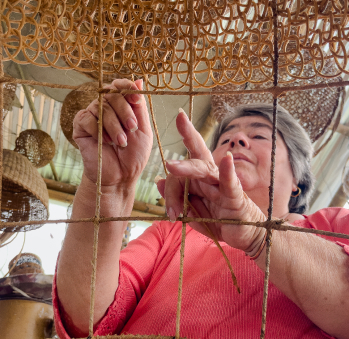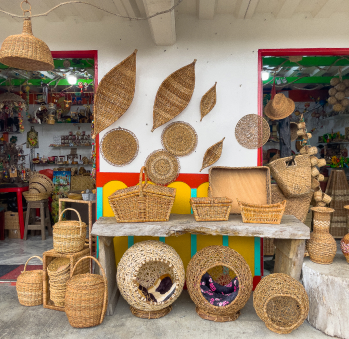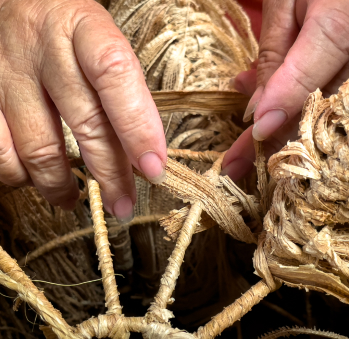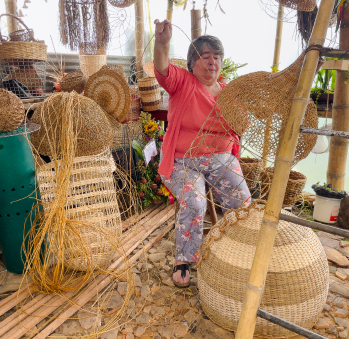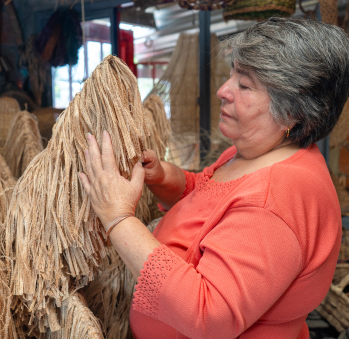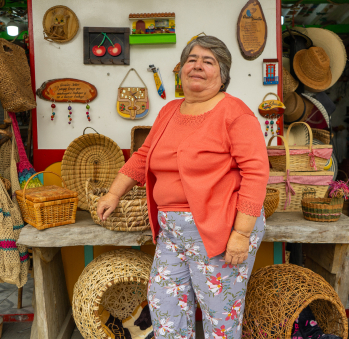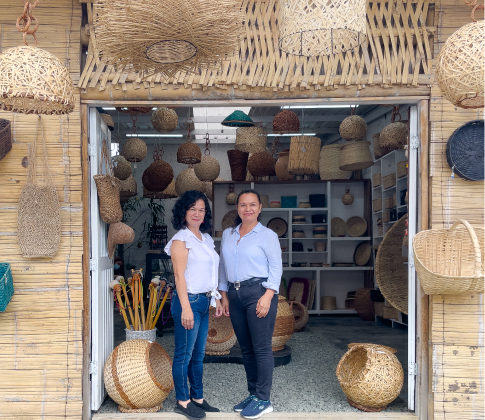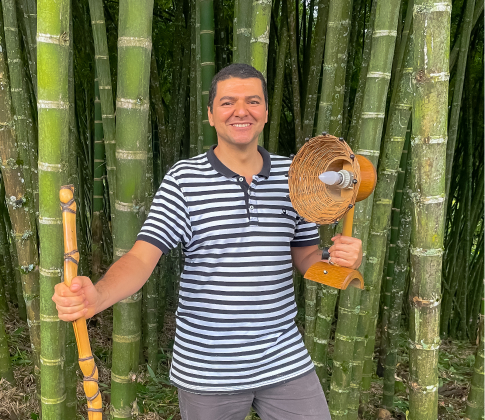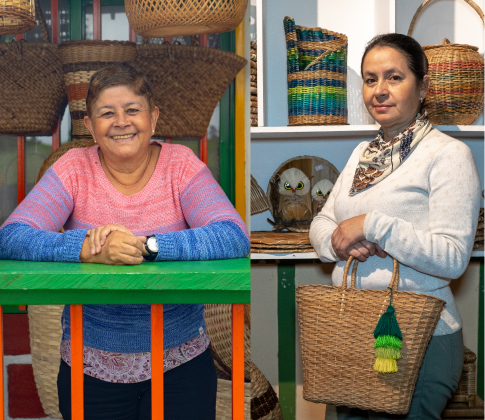Ruby Arias Velázquez
Workshop: Arte Ruby
Craft: Basketmaking
Trail: Risaralda-Quindío Route
Location: Filandia, Eje Cafetero
SCHEDULE YOUR VISIT
Barrio San Jose Casa 247, Filandia
3155337567
arteruby@gmail.com
@arteruby
@arterubyfilandia
It is impossible to keep your eyes from looking up once you enter Ruby’s house. This is because there are dozens of baskets and containers of all colors and sizes hanging from her ceiling. She says that she grew up surrounded by vines and baskets. She honors these items by displaying and living among them. Moreover, the latter allows her to further continue her family’s crafting tradition. There were 12 children in her family and all of them were able to eat thanks to weaving. She remembers how, in Filandia, mothers and grandmothers hung small baskets in their kitchens above their wood stoves to store arepas and eggs away from vermin.
Ruby is an eloquent woman. She tells us that, although she constantly saw vine strips lying on the floor at home when she was a girl, she only started to take weaving seriously when she got married —when she got married off, as she clarifies. She is fully aware of the life she had lived up to that point. Before completely devoting herself to the craft, she did everything she could to support her household: she was a community mother, picked coffee, and hauled plantains, for instance. She had to submit herself to these roles until, one day, she finally left her husband —the “jealous whirlwind,” as she described him. At that moment, she decided to completely commit herself to remembering her weaving tradition, as well as to learning new techniques and innovative manufacturing practices. With this in mind, she got into as many workshops as she could.
She, as it turns out, was genius at handling fibers. She did not say no to anything, and nothing was ever too big for her. She never hesitated to undo any of the weavings she was not satisfied with so she could straighten or finish them properly —not even a thousand times over if needed. She remembered the days of hard work at her mother’s house when she started practicing the trade once again. Doña Blanca, her mother, would weave from dawn to dusk to be able to buy the bare essentials: panela and a pound of rice for the day. Meanwhile, Ruby’s father would go out into the woods with her older brothers for several days at a time to harvest chusco, cucharo, and tripillo vines. They later smoked and dried them to craft the typical bagacero and grocery baskets, which are an important source of income for many families in Quindío.
Those tough early years taught her the meaning of work and sacrifice: a lesson she is deeply grateful for. Her modesty is such that it allows her to be certain that she will never stop learning. This is why she has constantly experimented with different types of vine, as well as with plantain guasca.
She laughs when she recalls how one of her brothers teased her for trying to make vases with a soccer-ball pattern. She, however, left him speechless with the results of her endeavor and told him she was not a fool, but rather clever. The line of vases that was born from said experiment became her trademark product for years. Nonetheless, she has focused most of her energy for some time now on making lamps, of which she delights in creating different models.
Today, she is glad that she can enjoy her business in the company of her brothers and nephews —the family “gang¬,” as she calls them. The latter has ensured that the legacy of the Arias Velásquez family in Filandia will continue to be this trade for years to come.
Craft
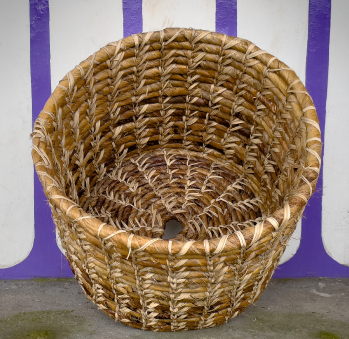


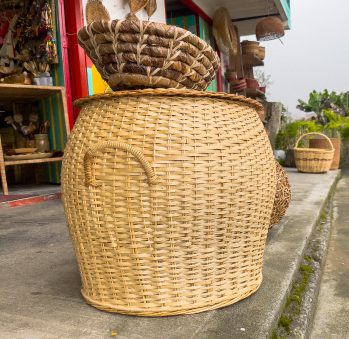
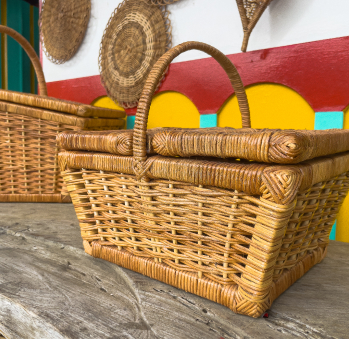
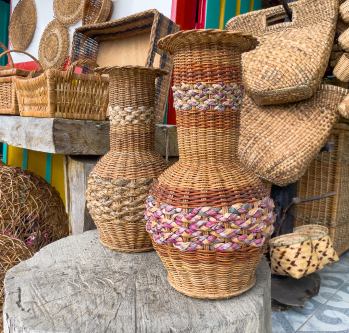






Artisans along the way
Artisans along the way
No puede copiar contenido de esta página








































